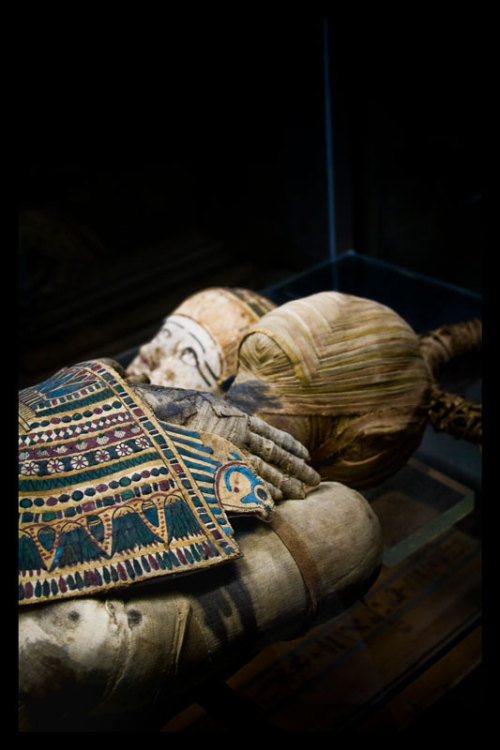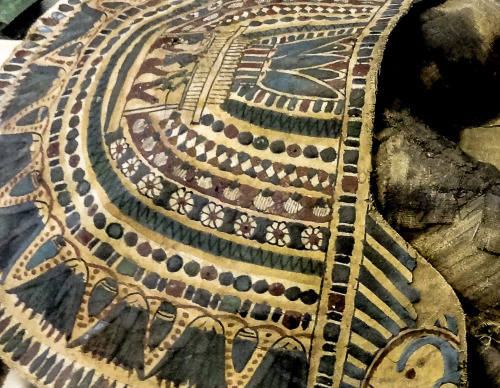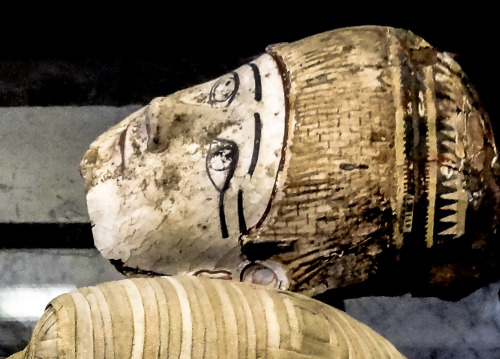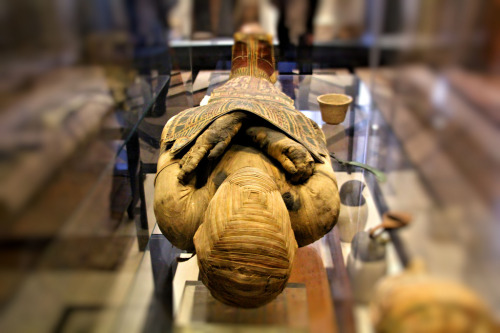ancientart:“They take first a crooked piece of iron, and with it draw out the brain through the nost
ancientart:“They take first a crooked piece of iron, and with it draw out the brain through the nostrils, thus getting rid of a portion, while the skull is cleared of the rest by rinsing with drugs; next they make a cut along the flank with a sharp Ethiopian stone, and take out the whole contents of the abdomen, which they then cleanse, washing it thoroughly with palm wine, and again frequently with an infusion of pounded aromatics…" -Greek historian Herodotus describes the process of mummification in Egypt (trans. Rawlinson).Shown here is an extraordinarily well preserved Egyptian mummy at the Louvre. This man lived during the Ptolemaic Period, and his name can be read as either Nenu or Pachery. The body has been sophisticatedly wrapped in strips of linen, and the mummy is covered with a cartonnage. Included here is a mask, an apron across the legs, and a collar over the chest.Rigault Patricia from the Louvre provides the below description. This is only a section of the full write-up, you can read the rest here if you wish.A body preserved for eternityNot everyone in ancient Egypt had access to the funerary practices that ensured eternal life, and many people had to settle for a simple pit in the desert and a few modest offerings. For the more fortunate, preserving body provided an additional guarantee of survival in the afterlife. It offered a new support for the various elements of the living being that were dispersed at the time of death. Although the earliest mummies were little more than bodies wrapped in linen strips dipped in resin, more sophisticated methods soon developed; mummification procedures were highly perfected by the New Kingdom.Although the number of mummies increased from this period on, the quality of the work tended to decrease. Nevertheless, mummies from the Greco-Roman period are often remarkable for the highly subtle designs formed by the interwoven linen strips. Depending on the period, a mummy could be covered a clothing, a net of beads, a mask, or a decorated wooden plank or cartonnage. During the Ptolemaic Period, various cartonnage elements were arranged on the mummy before it was placed in the coffin. Courtesy of & currently at the Louvre, France, N 2627. Photos by: Massimo Palmieri (1), Yann Caradec (2 & 3, cropped), and Oleg Ы (4). -- source link
Tumblr Blog : ancientart.tumblr.com



